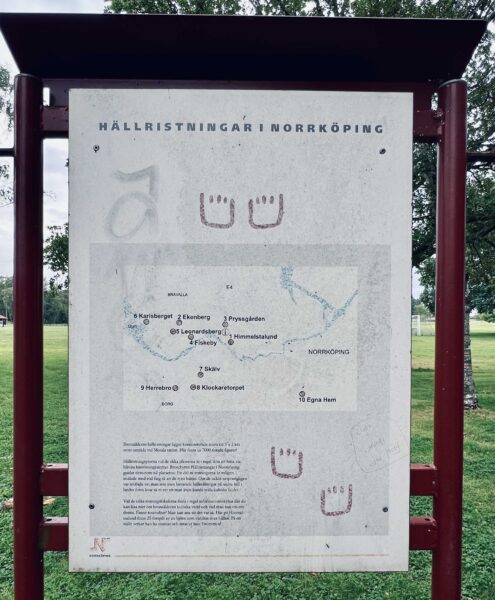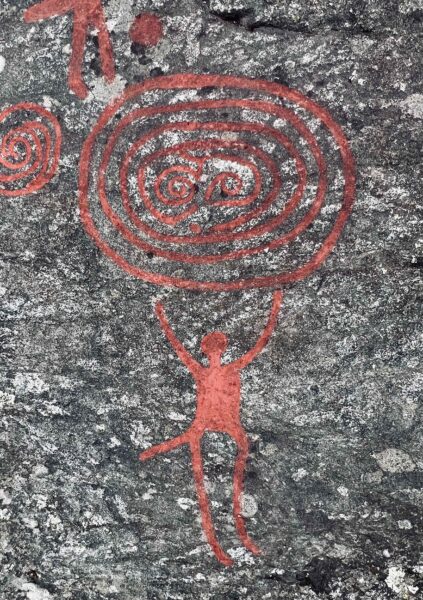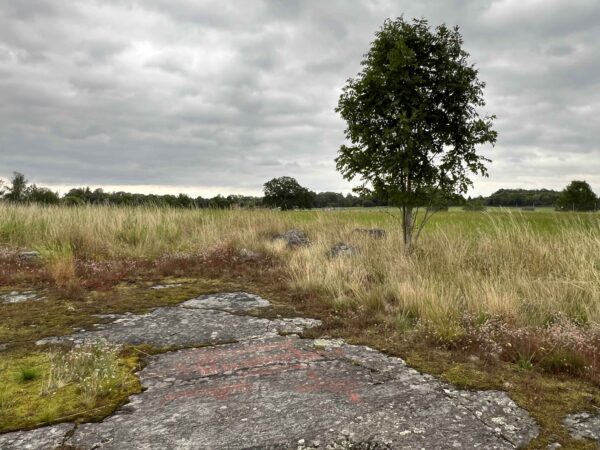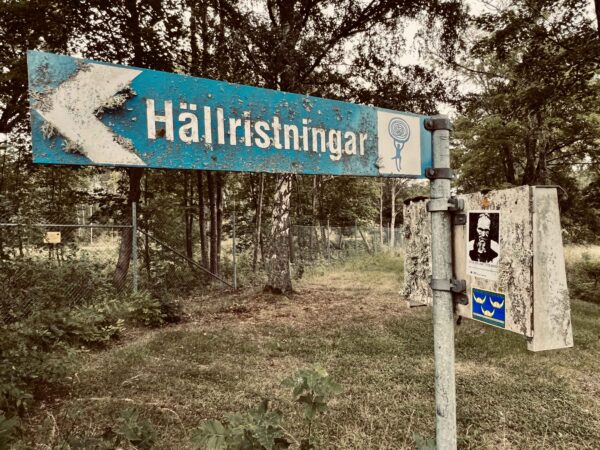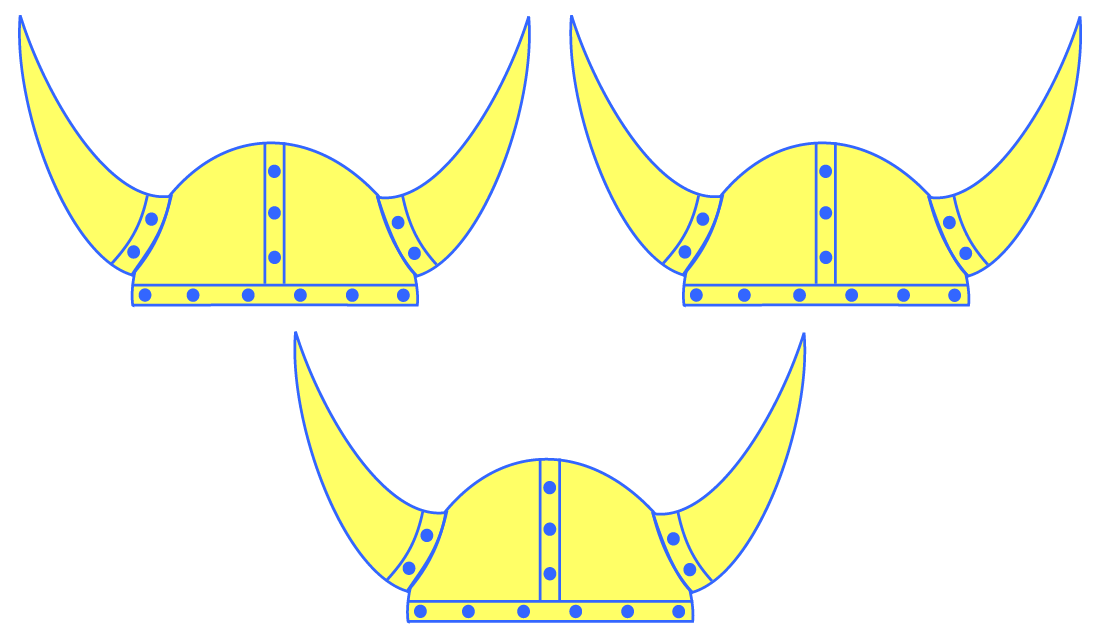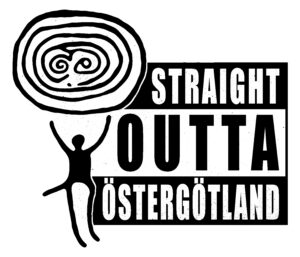
Nothing warms the soul like a little Eastern Geatish Bronze Age thug-life parody. The graphic design here riffs off the iconic “Straight Outta Compton” movie logo, which has been mimicked many times before (“Straight Outta Boston” or “Straight out Minneapolis” knock-offs, for example), but I’m pretty sure no one has ever combined the logo with Norrköping’s Bronze Age rock-carving sun-bearer known as Solbäraren till now.
Solbäraren is extremely well-endowed in both cosmic strength and phallic assets. He’s also just one of the many Bronze Age petroglyphs found in Norrköping, which is the second largest city in Östergötland (ostensibly, Eastern Geatland). These hällristningar (as they’re known in Swedish) exist in clusters within the municipality; they’re not all to be found in a single spot. Solbäraren lives just outside of town at the Ekenberg location, close to the Fiskeby packaging-materials factory. There are actually twelve different clusters of hällristningar spread around Norrköping. The easiest cluster to access is the one at Himmelstalund because it is nearest the city center. While you won’t find Solbäraren at Himmelstalund, there are still many nice carvings to observe there including scenes of ships, men carrying ships, and men hunting wild beasts.
The new “Straight Outta Östergötland” graphic is available on a variety items at my SpreadShop should you feel so inclined to peruse that. A couple of earlier blog posts also provide additional information about the hällristningar themselves as well as the notions of Geatland:
It is also interesting to note that a theory recently put forth by professor emeritus of archaeology, Bo Gräslund, suggests that Geatland was actually the island of Gotland and not the more commonly accepted Götaland. This theory has taken off like wildfire in his native Sweden (to the extent that such outside-the-mainstream ancient Nordic material can). The theory hasn’t found anywhere near the same degree of acceptance beyond Sweden’s borders—I know for one that Tom Shippey remains skeptical since he addresses the matter in his own recent book, Beowulf and the North before the Vikings. But it’s an interesting theory and one I intend to read up on more in the near future.
In the meantime, here are a few relevant images of the hällristningar in Norrköping that depict a map of the clusters (only clusters 1 – 10; 11 and 12 are a bit too far to the east to be seen in the area displayed), Solbäraren up close and personal, Solbäraren’s natural habitat (you can kinda see him in the lower right portion of the photograph), and some wayfinding signage that I defiled long after Mother Nature had already had her way with it.
